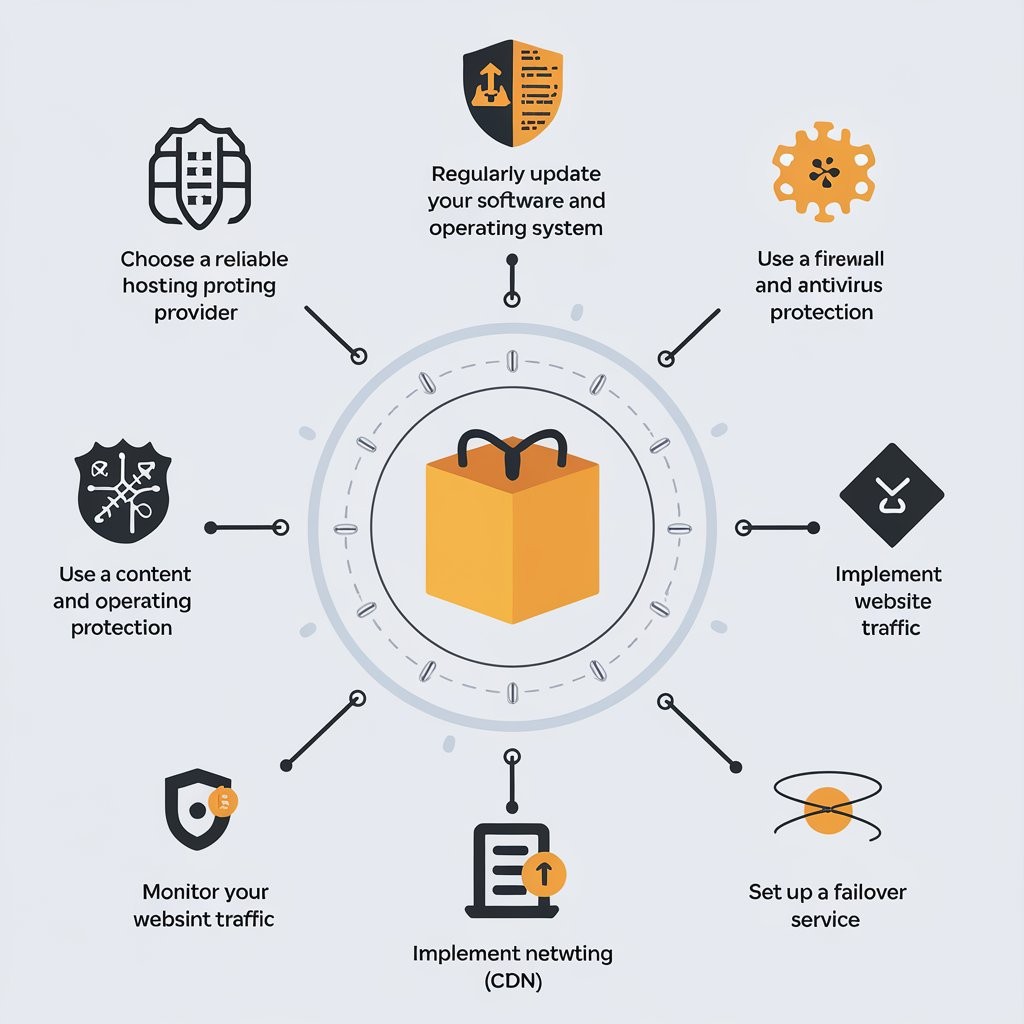ENG
10 Min Read
1. Use a Content Delivery Network (CDN)
A Content Delivery Network (CDN) distributes your web traffic across multiple servers, often in different geographic regions, which helps mitigate the impact of DDoS attacks. CDNs are designed to absorb large volumes of traffic and can mask your origin server’s IP address, making it harder for attackers to target it directly.
Benefits: Increased availability and scalability, offloading traffic, and better performance.
How it helps: During a DDoS attack, the CDN can handle and distribute the attack traffic, preventing your servers from being overwhelmed.
2. Deploy DDoS Mitigation Services
Specialized DDoS mitigation services are available from various security providers, such as Cloudflare, Akamai, and AWS Shield. These services use advanced techniques to detect and mitigate DDoS traffic before it reaches your servers.
Benefits: Real-time traffic filtering, increased resilience to large-scale attacks, and 24/7 monitoring.
How it helps: DDoS mitigation services automatically detect abnormal traffic patterns and route the malicious traffic away from your servers, allowing legitimate users to access your site.
3. Use Web Application Firewalls (WAFs)
A Web Application Firewall (WAF) can protect your website or web applications by filtering out harmful HTTP traffic and blocking malicious requests that could be part of a DDoS attack. WAFs monitor incoming traffic and apply predefined security rules to identify and block malicious activity.
Benefits: Protects against a wide range of attacks, including SQL injection and cross-site scripting (XSS), in addition to DDoS.
How it helps: WAFs inspect traffic for suspicious patterns and can help block malicious bots or traffic from known bad IP addresses before it reaches your server.
4. Implement Rate Limiting
Rate limiting involves controlling the number of requests a user can make to your server in a given time period. By enforcing limits on how many requests a client can make (e.g., 100 requests per minute), you can reduce the risk of DDoS attacks that try to overwhelm your server.
Benefits: Prevents excessive traffic from overwhelming your network and ensures fair access for all users.
How it helps: Rate limiting helps to mitigate attacks that use a high number of requests to saturate your system and server resources, thus reducing the potential damage caused by DDoS attacks.
5. Use Redundancy and Load Balancing
Redundancy and load balancing are critical strategies for ensuring that your infrastructure can handle sudden spikes in traffic, including DDoS attacks. Load balancers can distribute traffic across multiple servers or data centers, ensuring that no single server becomes a bottleneck.
Benefits: Improved fault tolerance and system uptime.
How it helps: In the event of a DDoS attack, load balancing helps spread the malicious traffic across multiple servers, preventing any single server from being overwhelmed.
6. Monitor and Analyze Traffic in Real Time
Proactively monitoring your network traffic allows you to detect abnormal patterns and potential DDoS attacks early. Real-time monitoring tools, such as Intrusion Detection Systems (IDS) and Intrusion Prevention Systems (IPS), can alert you to unusual spikes in traffic or signs of an ongoing attack.
Benefits: Early detection and quicker response to potential DDoS incidents.
How it helps: By analyzing traffic patterns in real time, you can identify and respond to potential DDoS attacks before they cause significant disruptions to your operations.
7. Protect Your DNS Infrastructure
The Domain Name System (DNS) is often targeted in DDoS attacks, particularly DNS amplification attacks. Protecting your DNS infrastructure is essential for ensuring that users can still access your website even during an attack.
Benefits: Ensures continuous access to your website and services.
How it helps: Using DNS redundancy (multiple DNS servers) and DNS rate limiting can help absorb attack traffic and prevent your DNS service from being taken offline.
8. Set Up a Response Plan
Having a DDoS response plan in place is essential for mitigating the effects of an attack. This plan should include a clear escalation procedure, roles for team members, and steps for communicating with your DDoS mitigation service, customers, and stakeholders.
Benefits: Quick, coordinated response to minimize attack impact.
How it helps: A predefined plan ensures that your team knows how to respond promptly and effectively when an attack occurs, reducing downtime and restoring services faster.
9. Work with Your ISP
Your Internet Service Provider (ISP) can play a vital role in mitigating DDoS attacks. Many ISPs offer DDoS protection services that can help filter malicious traffic before it reaches your network. It’s essential to establish a relationship with your ISP and ensure they have mechanisms in place to handle large-scale attacks.
Benefits: Protection from large-scale attacks at the network level.
How it helps: Your ISP can detect and block DDoS traffic at their edge of the network, preventing the attack from reaching your systems.
10. Educate Employees and Collaborate with Third-Party Experts
DDoS attacks can be triggered by vulnerabilities, poor practices, or human error. Training employees to recognize signs of a DDoS attack, avoid phishing scams, and implement strong security practices can reduce the risk of attacks. In addition, collaborating with cybersecurity experts can provide you with insights on improving your DDoS protection strategies.
Benefits: Enhanced awareness and a proactive approach to DDoS threats.
How it helps: By empowering employees and working with experts, you can improve the overall cybersecurity posture of your organization and mitigate the risk of DDoS attacks. audit3aa
Join our newsletter list
Sign up to get the most recent blog articles in your email every week.
You can copy our materials only after making sure that your services are safe.
This site is protected by reCAPTCHA and the Google Privacy Policy and Terms of Service apply.










